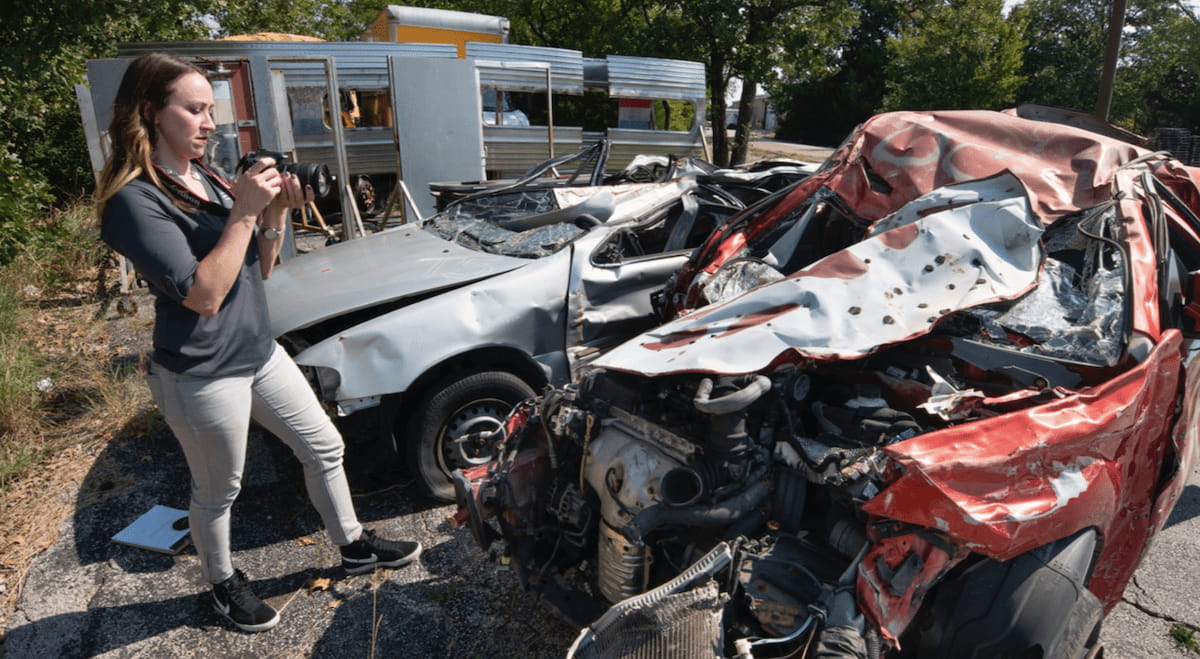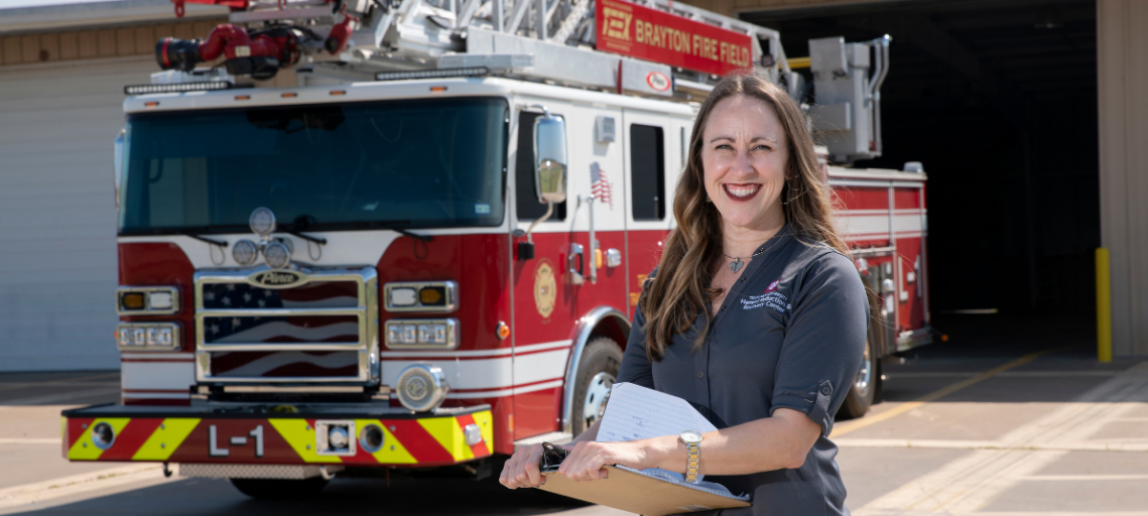How New Media and Volunteer Groups are Saving Lives
In the midst of a disaster, when emergency services are stretched thin, everyday people are rising up to help their neighbors in organizations that perform life-saving rescue and aid efforts using social media and other digital technologies.
Michelle Meyer, director of Texas A&M’s Hazard Reduction and Recovery Center, studies these volunteer groups. Her findings could help these groups and their communities come up with better ways to dispatch help, target resources to neighborhoods historically ignored, and do pre- and post-disaster planning and recovery for emergencies including hurricanes, floods, COVID-19 and future disasters.
Funded by National Science Foundation grants totaling nearly $650k, Meyer is studying the evolution of these volunteer groups after disasters, how they use social media and technology to coordinate efforts and how communities can best harness philanthropic resources to help long-term, post-disaster recovery.
The eight volunteer rescue organizations Meyer and colleagues at LSU are studying are often referred to as the Cajun Navy and assumed to be one organization. This movement of many groups include volunteers that sprang into action after Hurricanes Katrina and Harvey to rescue thousands of people from flooding using their personal boats and, later, social media apps to organize rescue attempts.
“People who have boats have always gone out and rescued their neighbors,” she said. “But the 2016 Louisiana floods marked one of the first times people were posting their addresses on social media asking for help. Hurricane Harvey was similar.”
Meyer said it’s possible that these organizations, which disaster scholars call “emergent groups,” traditionally disbanded after disasters passed, but continue to exist now because of social media.
After Harvey, some of these rescue groups created formal nonprofit structures, trained members in emergency management systems, continued to aid in community needs, and coordinated their efforts using social media and various new apps.
“They use Slack, Zello (a walkie talkie app), Microsoft Teams, all these different apps. Some are building their own apps or helping startup rescue groups test theirs,” Meyer said. “Smartphones now allow for better real-time geolocation of people who are in a need and those who can help. You can track team members’ locations, which in a rescue situation is very important.”

Responding to the Pandemic
“Several of these organizations are responding to COVID-19 by making masks and delivering food,” she said.
Meyer, who is helping with dispatching herself, says hazard research is very hands-on compared to traditional academia. All the research done has an immediate turnaround to help people in society.
“The original impetus of disaster social science is applied,” she said. “That’s what drew me to our center, that it’s part of our goal to have an impact. And it isn’t just 10% or a fraction of what we do, it’s a core piece. When we think of research, we immediately consider how it will be applied.”
Using GIS and the Texas Atlas
Texas A&M researchers also use their expertise to help communities’ disaster planning.
Fellow Hazard Reduction & Recovery Center researchers Doug Wunneburger, associate professor of urban planning, and Jaimie Masterson, associate head of Texas Target Communities, mapped several Texas counties’ community organization and COVID-19 needs in the Texas Coastal Communities Planning Atlas, an online, interactive map with flood, wind, and surge zones, evacuation routes, population location, and more that communities use for hazard planning.
“Jaimie informed us of a community need to locate pockets of quarantined elderly people who might be struggling to get food because they don’t live close to a grocery store,” Meyer said. “Using our mapping resources, Wunneburger and Masterson added data to the Coastal Atlas, pinpointing some neighborhoods in counties north of Dallas where there may be more elderly who are in need of services, so organizations can dispatch help to those specific areas.”
Wunneburger, a GIS expert who has contributed his knowledge to Texas A&M for over 30 years, mapped elderly and other vulnerable populations that frequently use food banks, and identified low and moderate income areas, which Meyer says is vital for identifying immediate needs as well as informing policy and getting grants from the federal government to support community needs.
Preventing Future Disasters by Empowering Low Income Populations
“One of our efforts is helping with hazard mitigation planning, which is hazard planning that happens before a disaster to prevent negative impacts, like improving ditches to decrease flooding,” said Meyer. “Communities can get funding for this, but they have to show they are using the money for those in need.”
Meyer said a ditch system will affect a lot of neighborhoods, but by mapping out the percentage of low to moderate income population in the benefit area of the project, they can more easily find funding.
“Scholars have found that lower- income individuals are the most impacted and have the worst time recovering from disasters,” she said. “Affordable housing is in more hazardous areas. Minorities were historically segregated into more hazardous areas and communities have not invested in risk reduction in those neighborhoods as they have in wealthy, whiter neighborhoods. If we target limited funding to promote equity for vulnerable populations, it makes the whole community more resilient.”
Long Term, Post-Disaster Housing Solutions
Meyer has also begun a first-of-its- kind study of the effectiveness of private aid groups’ in long-term, post- disaster housing recovery.
Natural disasters are increasing in size and frequency, and disaster-related housing recovery costs are on the rise, said Meyer. Because government assistance and private insurance often are inadequate to ensure full recovery for all affected people, private philanthropic resources, if used effectively and efficiently, may also help disaster survivors.
However, philanthropic response to disaster is understudied, said Meyer. “Little is known about what makes these organizations’ operations more or less effective in promoting community recovery and resilience. This will be the first investigation of its kind.”
Meyer’s project will include the development and analysis of a new dataset of nonprofit disaster housing recovery operations using data from recent disasters.
After her research is finished, Meyer will test a training program for local nonprofit organizations and foundations aimed at improving their disaster recovery operations.
The program will be developed as part of the study with the Center for Nonprofits and Philanthropy at Texas A&M’s Bush School of Government and Public Service and the OneStar Foundation.
Meyer’s research team includes postdoc Carlee Purdum, graduate students Joy Semien, Mason Alexander, and Kyle Breen (LSU), undergraduate research assistants Romel Fernandez, Jackson Pierce, Arthur Chambers, Nathan Young, Haley Yelle, and Abigail Bowers (LSU), and researchers Brant Mitchell and Stuart Nolan from the Stephenson Disaster Management Institute at LSU.
For more information, contact rnira@arch.tamu.edu or doswald@tamu.edu.


